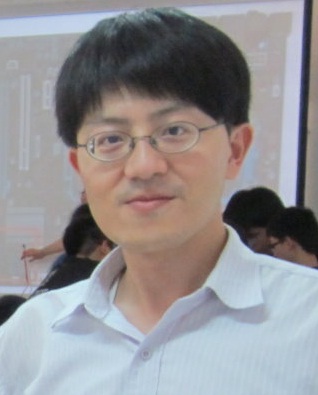Rule
construction >>
Geiger, C. D., Uzsoy, R., & Aytug, H. (2006). Rapid modeling and
discovery of priority dispatching rules: an autonomous learning
approach. Journal of Scheduling, 9(1), 7¡V34.
Geiger, C. D., & Uzsoy, R. (2008). Learning effective dispatching
rules for batch processor scheduling. International Journal of
Production Research, 46(6), 1431¡V1454.
Pickardt, C., Branke, J., Hildebrandt, T., Heger, J., Scholz-Reiter,
B. (2010). Generating dispatching rules for semiconductor
manufacturing to minimize weighted tardiness. Proceedings of the
2010 Winter Simulation Conference, 2504¡V2515.
Tay, J. C., & Ho, N. B. (2008). Evolving dispatching rules using
genetic programming for solving multi-objective flexible job-shop
problems. Computers & Industrial Engineering, 54(3), 453¡V473.
Nguyen, S., Zhang, M., Johnston,
M., and Tan, K.C. (2013). Learning iterative dispatching rules for job
shop scheduling with genetic programming, International Journal of
Advanced Manufacturing Technology, DOI 10.1007/s00170-013-4756-9.
Rule
parameter optimization >>
Chiang, T. C., & Fu, L. C.
(2004). Parameter tuning of production scheduling rules by an ant
system-embedded genetic algorithm. Proceedings of IEEE
International Conference on Robotics, Automation, and Mechatronics,
1089¡V1094.
Stockton, D. J., Khalil, R., & Ardon-Finch, J. (2008). Control point
policy optimization using genetic algorithms. International
Journal of Production Research, 46(10), 2785¡V2795.
Rule
selection >>
Herrmann, J. W., Lee, C. Y., & Hinchman, J. (1995). Global job shop
scheduling with a genetic algorithm. Production & Operations
Management, 4(1), 30¡V45.
Chen, J. H., Fu, L. C.,
Lin, M. H., & Huang, A. C. (2001). Petri-net and GA-based approach
to modeling, scheduling, and performance evaluation for wafer
fabrication. IEEE Transactions on Robotics and Automation,
17(5), 619¡V636.
Sha, D. Y., & Liu, C. Y. (2003). A simulated annealing algorithm
for integration of shop floor control strategies in semiconductor
wafer fabrication. International Journal of Advanced
Manufacturing Technology, 22(1-2), 75¡V88.
Liu, M., & Wu, C. (2004). Genetic algorithm using sequence rule
chain for multi-objective optimization in re-entrant
micro-electronic production line. Robotics and
Computer-Integrated Manufacturing, 20(3), 225¡V236.
Song, D. P., Hicks, C., & Earl, C. F. (2006). An ordinal
optimization based evolution strategy to schedule complex
make-to-order products. International Journal of Production
Research, 44(22), 4877¡V4895.
Yang, T., Kuo, Y., & Cho, C. (2007). A genetic algorithms simulation
approach for the multi-attribute combinatorial dispatching decision
problem. European Journal of Operational Research, 176(3),
1859¡V1873.
Kapanoglu, M. & Alikalfa M.
(2011). Learning IF¡VTHEN priority rules for dynamic job shops using
genetic algorithms, Robotics & Computer-Integrated Manufacturing,
27(1), 47¡V55.
Korytkowski, P., Wiśniewski, T., Rymaszewski S. (2013). An
evolutionary simulation-based optimization approach for dispatching
scheduling, Simulation Modelling Practice and Theory, 35,
69¡V85.
Rule
combination >>
Dorndorf, U., & Pesch, E. (1995). Evolution based learning in a job
shop scheduling environment. Computers & Operations Research,
22(1), 25¡V40.
Chiang, T. C., Huang, A. C., & Fu, L. C. (2006). Modeling,
scheduling, and performance evaluation for wafer fabrication: a
queueing colored Petri-net and GA-based approach. IEEE
Transactions on Automation Science and Engineering, 3(3),
330¡V337.
Chien, C. F. & Chen, C. H. (2007b). Using genetic algorithms (GA)
and a coloured timed Petri net (CTPN) for modeling the
optimization-based schedule generator of a generic production
scheduling system. International Journal of Production Research,
45(8), 1763¡V1789.
Chiang, T. C., Shen, Y. S., & Fu, L. C. (2008). A new paradigm for
rule-based scheduling in the wafer probe center. International
Journal of Production Research, 46(15), 4111¡V4133.
Zhang, H., Jiang, Z., & Guo, C. (2009). Simulation-based
optimization of dispatching rules for semiconductor wafer
fabrication system scheduling by the response surface methodology.
International Journal of Advanced Manufacturing Technology,
41(1-2), 110¡V121.
Zhang, H., Jiang, Z., & Guo, C. (2009). An optimized dynamic
bottleneck dispatching policy for semiconductor wafer fabrication.
International Journal of Production Research, 47(12),
3333¡V3343.
Vázquez-Rodríguez, J. A., & Petrovic, S. (2010). A new dispatching
rule based genetic algorithm for the multi-objective job shop
problem. Journal of Heuristics, 16(6), 771¡V793.
Model
simplification >>
Kim, Y. D., Shim, S. O., Choi, B., & Hwang, H. (2003).
Simplification methods for accelerating simulation-based real-time
scheduling in a semiconductor wafer fabrication facility. IEEE
Transactions on Semiconductor Manufacturing, 16(2), 290¡V298.
Piplani, R., & Puah, S. A. (2004). Simplification strategies for
simulation models of semiconductor facilities. Journal of
Manufacturing Technology Management, 15(7), 618¡V625.
Upasani, A. A., Uzsoy, R.,
& Sourirajan, K. (2006). A problem reduction approach for scheduling
semiconductor wafer fabrication facilities. IEEE Transactions on
Semiconductor Manufacturing, 19(2),216¡V225.
Chiang, T. C. (2010). Model simplification for accelerating
simulation-based evaluation of dispatching rules in wafer
fabrication facilities. Proceedings of the 11th International
Conference on Control, Automation, Robotics, and Vision,
2005¡V2011.
Cooperation with rules >>
Mönch, L., Schabacker, R.,
Pabst, D., & Fowler, J. W. (2007). Genetic algorithm-based
subproblem solution procedures for a modified shifting bottleneck
heuristic for complex job shops. European Journal of Operational
Research, 177(3), 2100¡V2118.
Multi-function (hybrid) >>
Pickardt, C. W., Hildbrandt, T.,
Branke, J. Heger, J., and Scholz-Reiter, B. (2013). Evolutionary
generation of dispatching rule sets for complex dynamic scheduling
problems. International Journal of Production Economics.
dio:101016/j.ijpe.2012.10.016. [rule construction,
machine-dependent rule selection]
Nguyen, S., Zhang, M., Johnston,
M., and Tan, K. C. (2013). A computational study of representations in
genetic programming to evolve dispatching rules for the job shop
scheduling problem. IEEE Transactions on Evolutionary Computation,
17(5), 621 - 639. [rule construction, state-dependent
rule selection, rule parameter optimization]

